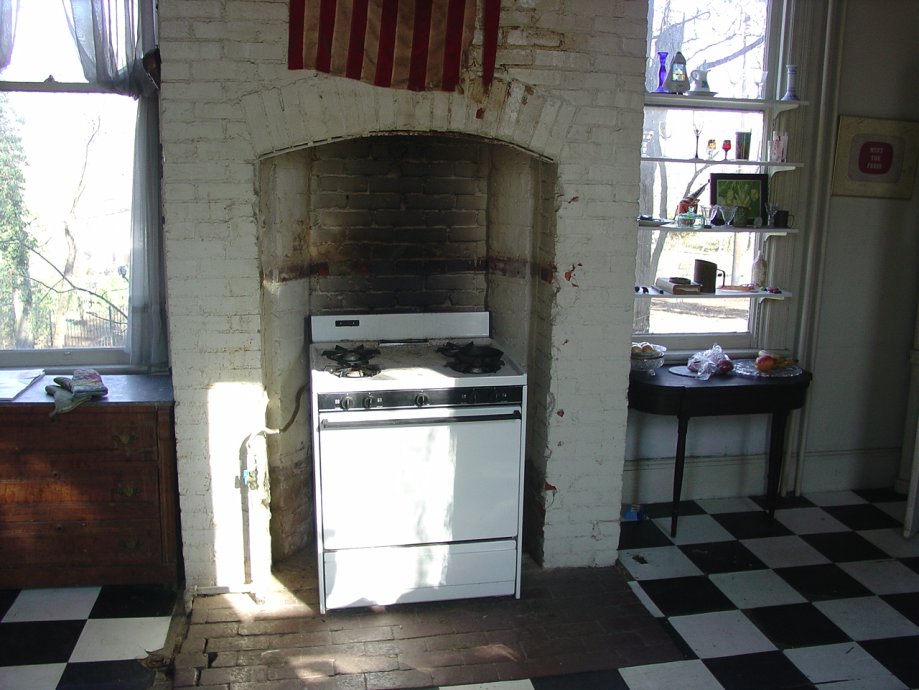1890 Victorian "Braemar"
With a mysteriously tall kitchen fireplace
12/29/09
 |
Can you identify this house and offer any insight on the tall kitchen fireplace? We are stumped. Click here if you have any ideas.
On Wed, Dec 16, 2009 at 8:38 AM, jon chromak I am wondering if you may be of help. Our family home is a 1890 Victorian "Braemar". It has a very tall fireplace in the kitchen, that was covered with plaster. My mother had dad remove the plaster in 1964 and tried to start a fire. We have 7 fireplaces in the home. it smoked up the kitchen so as not of use. It has a steel arch bar holding the stone work. see photos. The bricks in the corners were installed by my father as the one on the left had a 3 inch exhaust pipe from the then gas hot water heater. In the old basement where the 3 inch pipe from the old gas vent pipe went is a 6 diameter red clay opening and looking @ the floor when I replaced the hot water heater had an old coal Moring glow heater, judging my the imprint on the concrete floor.
|
|
I am wondering if this is just a 1890 wood cook stove fireplace? I have done some inet research and have not located any such tall fireplaces with a wood cook stove. Also above the arch on the fireplace opening is the patchwork of a 6 inch hole, see photos. Any help would be appreciated. ------------ Jon, What an interesting house and what an unusual fireplace. Frankly I've never seen a cooking fireplace that tall and narrow. Where is the house? "Braemar" is in Scotland. Is that where it is? Are there other similar homes nearby? Have you asked any local historians what they think of the house and fireplace? I wonder if the fireplace was at countertop level at the end of a masonry stove like the one Rumford had built in Bavaria. There were similar masonry cookstoves in America, such as at Popular Forest, Jefferson's other home and in Cape Neddick, ME or even some version of the setpots in the cooking fireplace at Williamsburg. Or, it might be, as you suggest, an alcove for an iron wood cookstove, but I have never seen one either. The construction with the steel bar arched top and the corbelled smoke chamber is common and not remarkable. The flue size, which I judge to be about 9" by 13" is not large enough for this fireplace to draft unless the fireplace inner hearth was raised so that the real fireplace opening was only about three feet high. Can you see any evidence that something was built into the fireplace or that the inner hearth had ever been about three feet off the floor? I'd love to know more about this fireplace myself but I don't know where to turn. Tell me where the house is and what else you may know about it. I could put the pictures on the website and see if any of our architect, mason or historian customers can offer any suggestions.
Warm regards,
|

Buckley Rumford Fireplaces
Copyright 1996 - 2009 Jim Buckley
All rights reserved.
webmaster
